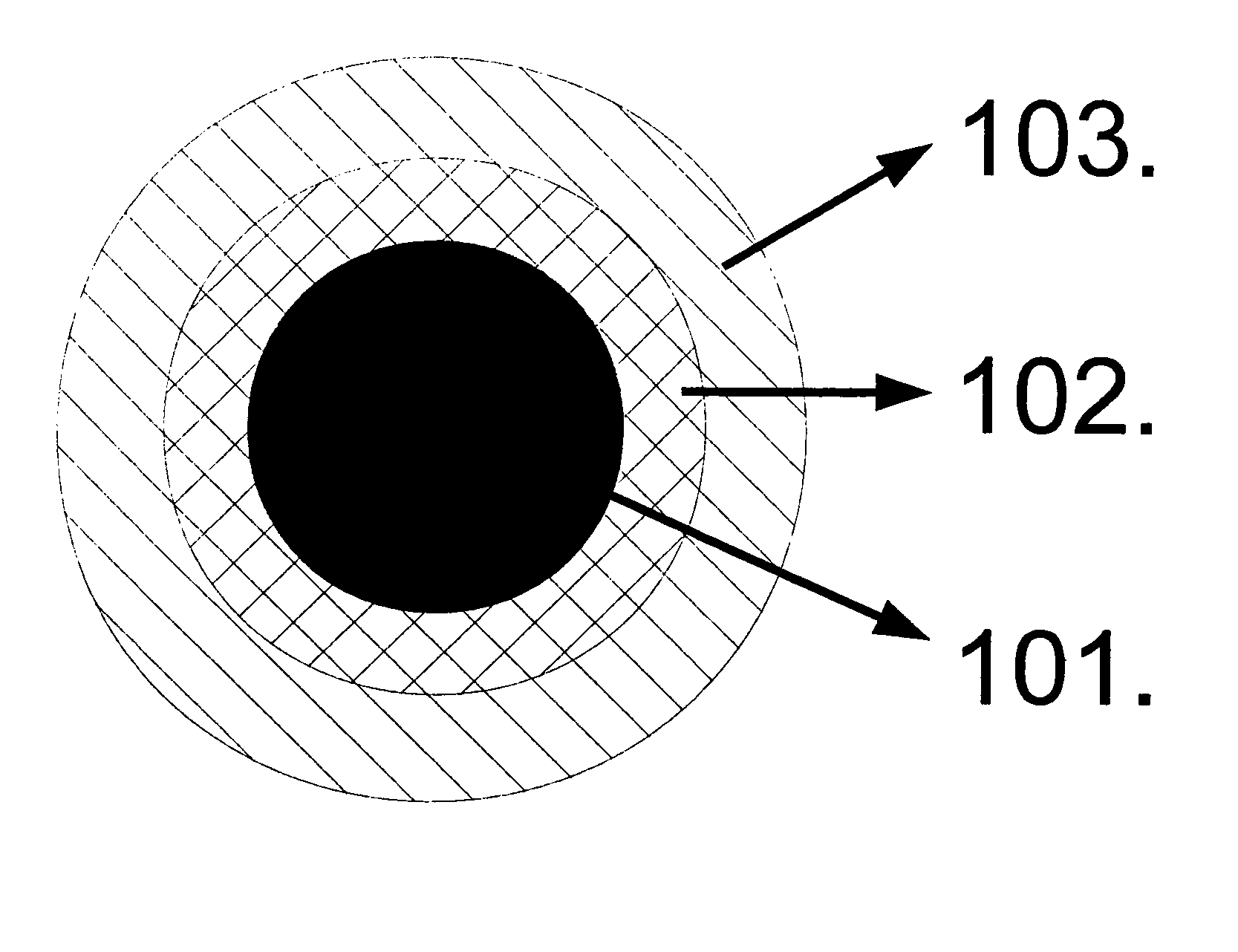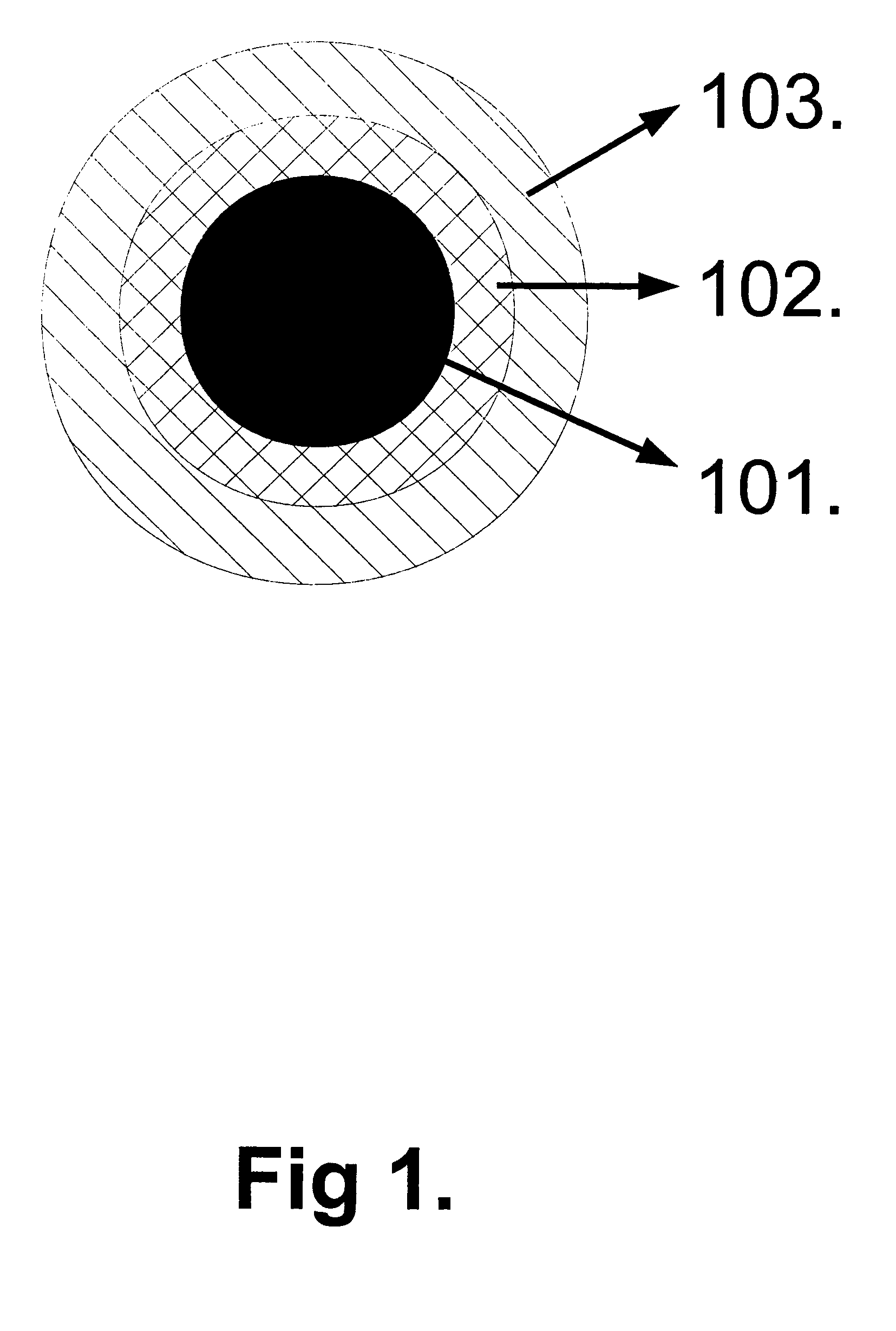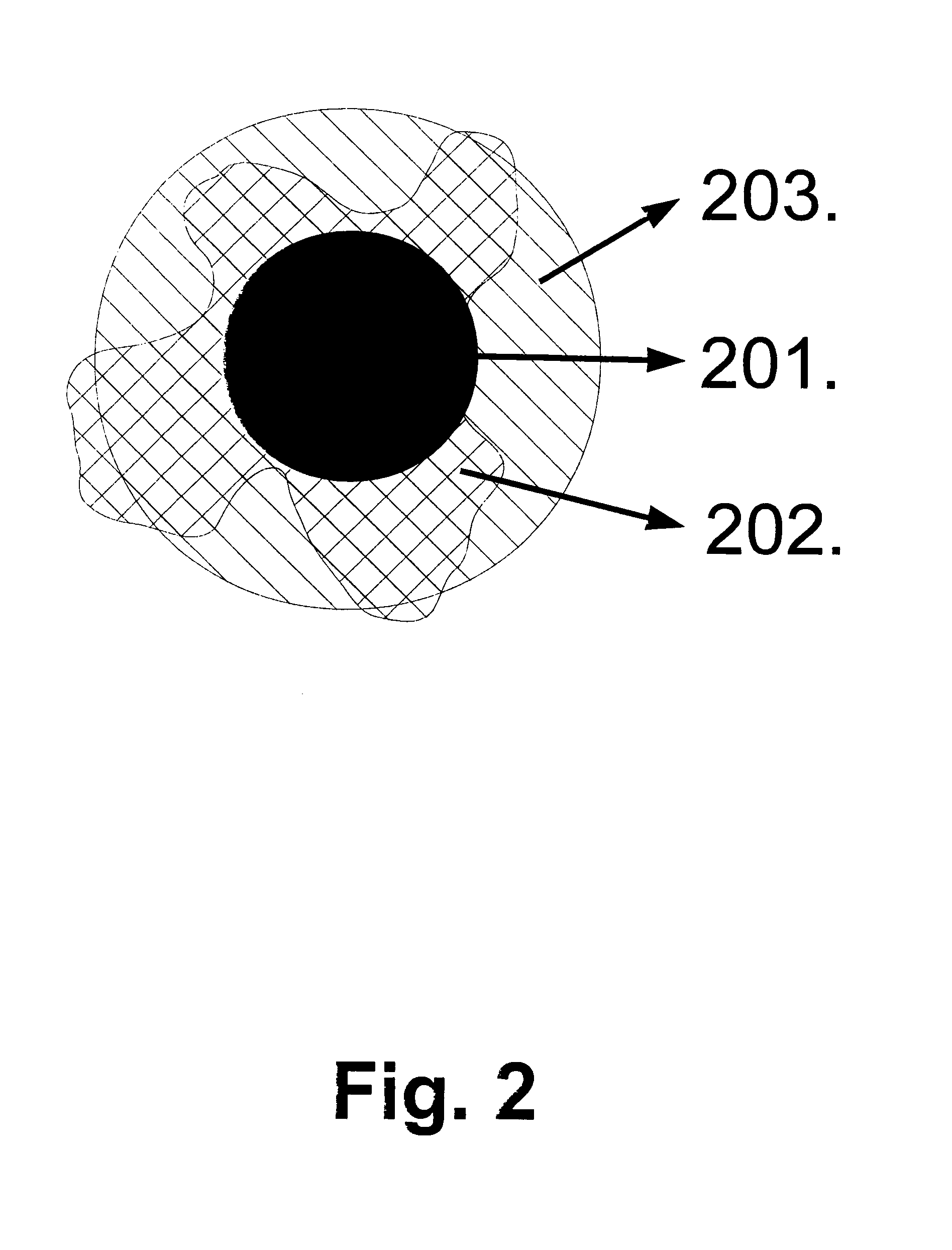Prussian blue based nanoparticle as multimodal imaging contrast material
- Summary
- Abstract
- Description
- Claims
- Application Information
AI Technical Summary
Benefits of technology
Problems solved by technology
Method used
Image
Examples
example 1
[0074]PB with Citric Acid (PB—2010Fe_AC)
[0075]Solution A contains 3.25 mg (0.02 mmol) FeCl3 and 96 mg (0.5 mmol) citric acid in 15 ml double distilled water. Solution B contains 8.44 mg (0.02 mmol) K4[Fe(CN)6]×3H2O and 96 mg (0.5 mmol) citric acid in 20 ml double distilled H2O at room temperature. (pHA=2.40; pHB=2.65). The solutions A and B were mixed at room temperature. Heated to 50° C. by water bath and mixed during 15 minutes. The next step of procedure is spinned for 30 min at 30000 / min at 4° C. The volume of produced nanoparticles was determined precisely with dynamic light scattering and the diameter was 40 nm. The absorption (UV and Vis) and IR spectrum of nanoparticle are tipical of size and material therefore the standardisation of different product was made by absorption and IR spectrophotometry. The UV-vis spectrum of the resulting solution showed a broad band at 690 nm. The IR spectra of the prussian blue nanoparticles exhibited a strong peak at 2078 cm-1 (C═N stretchin...
example 2
PB with Polyvinylpropylene. (PB—2010Fe_K30)
[0076]A solution of 375 mg Kollidon 30 (polyvinyl-pyrolidon) was made in 4.5 ml double distilled H2O at room temperature, and shaked until obtaining a clear solution. Then the solution was adjusted to pH 2.00 whit 0.5N HCl (4 drops). After then 11 mg K3[Fe(CN)6] was washed into it with 0.5 ml double distilled water. After 5 minute mixing the solution was heated in an autoclave for 2 hours at 80° C. After cooled down to room temperature it was spinned for 30 min at 29000 / min at 4° C. (Type 50.2 Ti). The volume of the produced nanoparticles was determined precisely with dynamic light scattering and the diameter was 160 nm. The quantification methods see above Example 1. The K30 adsorption to surface of nanoparticle was tested by IR spectroscopy (1650-1680 1 / cm). Based on these results concluded the core was Fe4[Fe(CN)6]3 and biocompatible coating was 22.5% of total mass of nanoparticles in final product.
example 3
PB without Biocompatible Corona (PB—2010Fe_Null)
[0077]Solution A contains 3.25 mg (0.02 mmol) FeCl3 and 96 mg in 15 ml double distilled water. Solution B contains 8.44 mg (0.02 mmol) K4[Fe(CN)6]x3H2O in 20 ml double distilled H2O at room temperature. The pH are changed in Solution A and B with 5-10 microL cc. Hcl, (pHA=2.02; pHB=2.05). The solutions A and B were mixed at room temperature. Heated to 60° C. by water bath and mixed during 15 minutes. The next step of procedure is spinned for 30 min at 30000 / min at 4° C. After sedimentation the nanoparticle was unloaded. The Fe concentration in bulk solution was measured by absorption spectroscopy. The volume of produced nanoparticles was determined precisely with dinamic light scattering and the diameter was 54+ / −7 nm. The quantification methods see above. Based on these results concluded the core was Fe4[Fe(CN)6]3.
PUM
 Login to View More
Login to View More Abstract
Description
Claims
Application Information
 Login to View More
Login to View More - R&D
- Intellectual Property
- Life Sciences
- Materials
- Tech Scout
- Unparalleled Data Quality
- Higher Quality Content
- 60% Fewer Hallucinations
Browse by: Latest US Patents, China's latest patents, Technical Efficacy Thesaurus, Application Domain, Technology Topic, Popular Technical Reports.
© 2025 PatSnap. All rights reserved.Legal|Privacy policy|Modern Slavery Act Transparency Statement|Sitemap|About US| Contact US: help@patsnap.com



